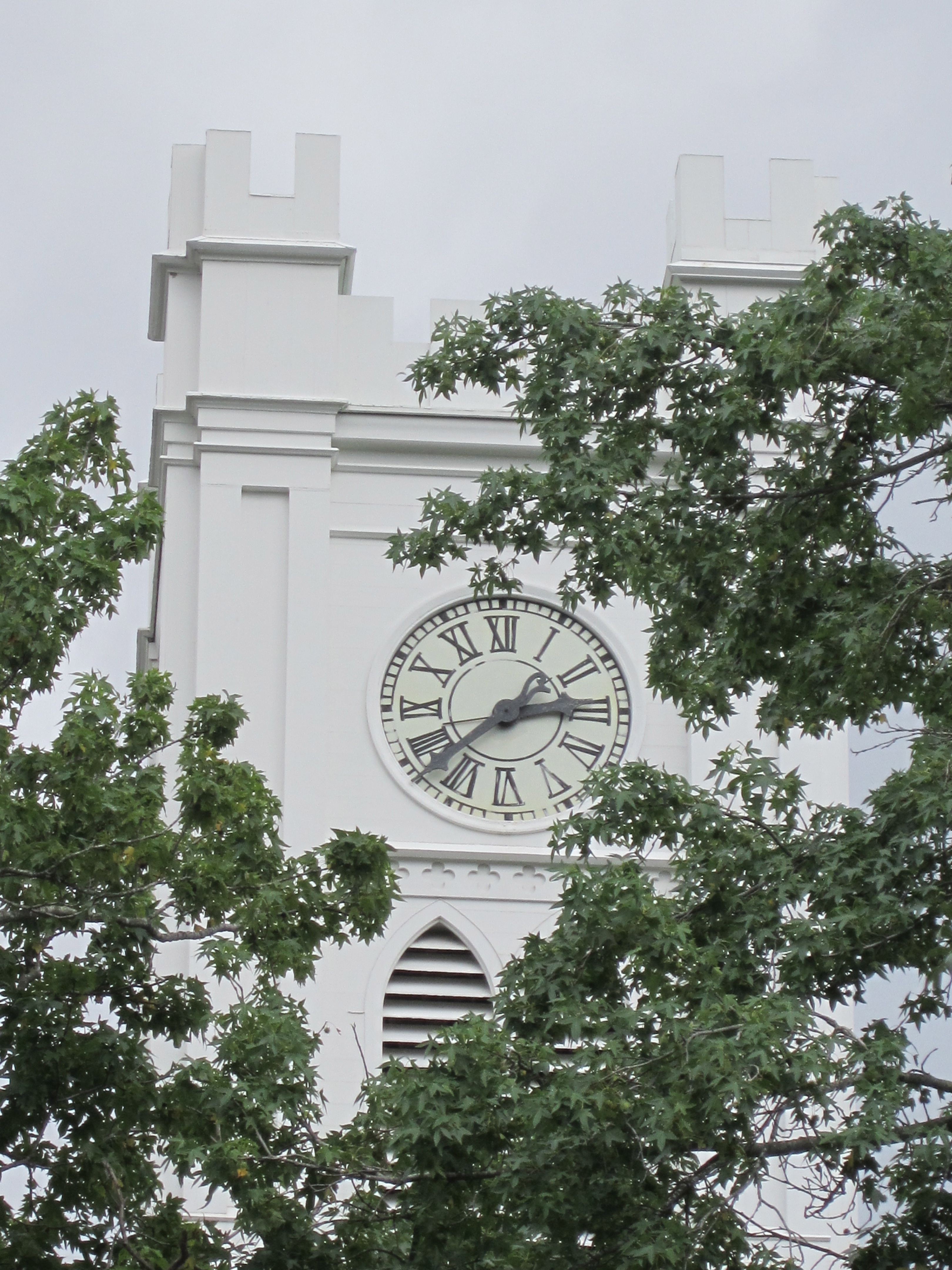Cell Phone Tower In A Steeple? Not At This One

Here on the East End, there’s a lot of anxiety about change. The East End has managed, through great vigilance, to avoid many of the uglinesses that blight other heavily populated parts of the country, and most would agree we should keep it that way. Our villages and countryside have been altered, but many landmarks remain unchanged, and some are beautifully preserved. And, if LIPA or AT&T come around and try to erect massive utility poles or cell towers in our midst, there’s always an outcry. The cables get buried, the cell tower gets hidden in a barn somewhere, and electricity and cell service get slightly more expensive.
However, some of the people and institutions we have relied upon to preserve the landmarks of the East End are basically taken for granted, expected to continue on as they always have. It would seem that people have figured out ways to keep the farmers from selling off their valuable land, even though their crops produce a small fraction of the income they could get from development. Churches, on the other hand, are on their own. Many churches on the East End maintain beautiful, historic buildings that are the architectural treasures of their communities, and they do it independently of any outside support.
If you’re like most people, you pass these beautiful buildings by and you say to yourself, “Well, these East End churches must receive adequate support.” This is not always the case. Witness the Sag Harbor Methodist Church, selling off its historic edifice because, with its small but loyal congregation, it simply couldn’t afford to keep it. That caused quite a stir in Sag Harbor, as people rushed to condemn the church’s move—but not many rushed to join the congregation or give them a chunk of cash to help them stay.
The truth is, people in the Hamptons are largely un-churched, and that’s not surprising, given the spirit of recreation and fun that pervades the place. Yet even the most non-religious beach bunny, if called upon to choose, would probably rather look at a church steeple than a strip mall. Likewise, I would hope that even the most jaded and cynical capitalist would feel a pang if he heard that, say, Old Whalers’ Church was being turned into condominiums. We all benefit from the preservation work that churches do.
Recently, the Southampton Village Board of Historical Preservation and Architectural Review denied Southampton’s First Presbyterian Church’s proposal to install a cell tower in their steeple. For those of you who don’t know, putting a cell tower in a steeple is actually a fairly typical strategy for phone companies to hide their towers (in affluent communities where people care) and for churches to get some reliable rental fees to supplement their income. In fact, Christ Episcopal Church in Sag Harbor has such an installation, as does the Congregational Church in Orient. It’s a win-win-win: the phone company avoids contentiousness with the not-in-my-backyard types, the church gets needed money, and the community gets better cell phone reception.
Unfortunately for Southampton Presbyterian, their steeple is also home to an historic clock. From 1887, the E. Howard & Co. clock is a mechanical masterpiece of precision, a hand-cranked tradition that is perhaps the finest example of its kind still in existence. If the cell tower were installed, the clock would have to come out and be replaced with a modern, automatic clock. There is no way to have both the cell tower and the clock. Here the goal of preservation comes up against itself in a Catch-22: the church needs money to help preserve its building, money that a cell tower in their steeple could provide, but the clock in the steeple itself IS an important piece of history that ought to be preserved.
At Dan’s, we are sympathetic to the needs of the church, and would have no objection to the cell tower if it weren’t for the clock. The church needs the money, and ought to have it. But, given the circumstances, we have to concur with the Southampton Village Board of Historical Preservation and Architectural Review’s decision.









